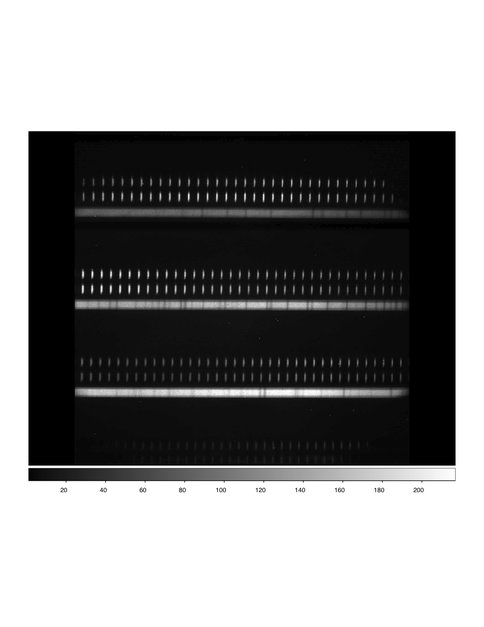2010 Annual Science Report
 Pennsylvania State University
Reporting | SEP 2009 – AUG 2010
Pennsylvania State University
Reporting | SEP 2009 – AUG 2010
Biosignatures in Extraterrestrial Settings
Project Summary
The team will investigate the abundance of sulfur gases and elucidate how these gases can be expected to evolve with time on young terrestrial planets. They will continue studies of planet formation in the presence of migration and model radial transport of volatiles in young planetary systems, and will be involved with searches for M star planetary companions and planets around K-giant stars.
Project Progress
4.1.1 Research by Kasting and collaborators shows SO2 is likely to be inadequate to explain early warm Mars. Collaboration with VPL and graduate student Haqq-Misra.
4.1.2 Continued research by Ohmoto and collaborators of early CH4 in the atmosphere of terrestrial planets and role of volcanoes in CO2 outgassing.
4.2 Progress by Lyons and collaborators continued of 17O/18O fractionation due to CO2 self-shielding during photolysis. Work underway on N2 and role of H2.
4.3 Sigurdsson and collaborators in the Center for Exoplanets and Habitable Worlds continued research on extrasolar planets: graduate student Yan Wang completed MSc project on habitability of planets during the course of stellar evolution; graduate student Rachel Worth commenced project on radial transport in the solar system in collaboration with Sigurdsson and House. Pathfinder near infrared spectrograph operated at HET telescope, U-Ne calibration for near IR and implementation of NIST supplied lasercomb operated and cross-calibrated. Three new graduate students supported in the summer of 2010, starting research on instrumentation, data reduction pipelines for radial velocity searches for planets, and modeling of formation and dynamics of planets.
Fiber fed near infrared spectra of a science target star, shown with the infrared laser comb calibrator on the two calibration fibers. Data taken with the Pathfinder spectrograph at the Hobby-Eberly telescope (Mahadevan et al, August 2010, private communication). Lasercomb from NIST/Colorado.
Publications
-
Kasting, J. F. (2010). Early Earth: Faint young Sun redux. Nature, 464(7289), 687–689. doi:10.1038/464687a
-
Segura, A., Walkowicz, L. M., Meadows, V., Kasting, J., & Hawley, S. (2010). The Effect of a Strong Stellar Flare on the Atmospheric Chemistry of an Earth-like Planet Orbiting an M Dwarf. Astrobiology, 10(7), 751–771. doi:10.1089/ast.2009.0376
-
Tian, F., Claire, M. W., Haqq-Misra, J. D., Smith, M., Crisp, D. C., Catling, D., … Kasting, J. F. (2010). Photochemical and climate consequences of sulfur outgassing on early Mars. Earth and Planetary Science Letters, 295(3-4), 412–418. doi:10.1016/j.epsl.2010.04.016
- Boney, E., Lyons, J.R. & Marcus, R.A. (2010). Self-shielding of the E(1)-X(0) band of CO in a hot solar nebula. LPSC. The Woodlands, TX.
- Güdel, M. & Kasting, J.F. (In Press). The young Sun and its influence on planetary atmospheres. In: Gargaud, M., Lopez-Garcia, P. & Martin, H. (Eds.). Origin of Life: an Astrobiology Perspective. Cambridge Univ. Press.
- Haqq-Misra, J. (2010). A Meteorological Condition for Atmospheric Stability on Synchronously Rotating Planets. Revisiting the Habitable Zone. Talaris Conference Center. Seattle, WA.
- Haqq-Misra, J. (2010). Astrobiology, Sustainability, and Outreach. Astrobiology Science Conference 2010. South Shore Harbour Resort and Conference Center, League City, TX.
- Haqq-Misra, J., Lee, S. & Frierson, D. (2009). Eddy-driven Responses of the Hadley Cell and Tropopause. American Geophysical Union Fall Meeting. Moscone Convention Center, San Francisco, CA.
- Kasting, J. & Haqq-Misra, J. (2009). Gaia Through Time: The Coevolution of Life and Climate. American Geophysical Union Fall Meeting. Moscone Convention Center, San Francisco, CA.
- Kasting, J.F. (2010). Early Mars was warm. Astrobiology Science Conf. Houston.
- Kasting, J.F. (2010). How to Find a Habitable Planet. In: Press, P.U. (Eds.).
- Kasting, J.F. (2010). Stellar radiative effects on habitable zones. Workshop on Redefining the Habitable Zone. Seattle, WA.
- Kasting, J.F. (In Press). How to find a habitable planet. In: Ribas, I. (Eds.). Pathways Towards Habitable Planets.
- Kasting, J.F. (In Press). The global O2 cycle, in Fundamentals of Geobiology, K. Konhauser, A. Knoll, and D. Canfield. In: Blackwell (Eds.).
- Lyons, J.R. (2010). CO self-shielding yields oxygen with a δ17O/δ18O ratio of unity. Meteoritical Society meeting. New York City, NY.
- Lyons, J.R. (2010). N2 self-shielding in the solar nebula: An update. Meteoritical Society meeting. New York City, NY.
- Lyons, J.R., Stark, G. & Heays, A.N. (2010). Assessment of CO photodissociation experiments by model simulations and spectroscopic measurements. LPSC. The Woodlands, TX.
- Mahadevan, S., Ramsey, L., Wright, J., Endl, M., Redman, S., Bender, C., Roy, A., Zonak, S., Troupe, N., Engel, L., Sigurdsson, S., Wolszczan, A. & Zhao, B. (2010). The habitable zone planet finder: a proposed high-resolution NIR spectrograph for the Hobby Eberly Telescope to discover low-mass exoplanets. SPIE.
- Ramsey, L.W., Mahadevan, S., Redman, S., Bender, C., Roy, A., Zonak, S., Sigurdsson, S. & Wolszczan, A. (2010). The Pathfinder testbed: exploring techniques for achieving precision radial velocities in the near infrared.
- Ramsey, L.W., Mahadevan, S., Redman, S., Bender, C., Roy, A., Zonak, S., Sigurdsson, S. & Wolszczan, A. (SPIE). The Pathfinder testbed: exploring techniques for achieving precision radial velocities in the near infrared.
- Zugger, M.E., Kasting, J.F., Williams, D.M., Kane, T.J. & Philbrick, C.R. (In Press). Simulated light curves from ocean and Lambertian exoplanets with Rayleigh-scattering atmospheres. Ap. J.
-
PROJECT INVESTIGATORS:
-
PROJECT MEMBERS:
Mark Claire
Co-Investigator
Edwin Bergin
Collaborator
Fred Ciesla
Collaborator
David Crisp
Collaborator
John Debes
Collaborator
Steven Desch
Collaborator
Avi Mandell
Collaborator
Jacob Haqq-Misra
Doctoral Student
Yan Wang
Graduate Student
Rachel Worth
Graduate Student
Megan Smith
Undergraduate Student
-
RELATED OBJECTIVES:
Objective 1.1
Formation and evolution of habitable planets.
Objective 1.2
Indirect and direct astronomical observations of extrasolar habitable planets.
Objective 2.1
Mars exploration.
Objective 2.2
Outer Solar System exploration
Objective 4.1
Earth's early biosphere.
Objective 4.3
Effects of extraterrestrial events upon the biosphere
Objective 6.2
Adaptation and evolution of life beyond Earth
Objective 7.1
Biosignatures to be sought in Solar System materials


